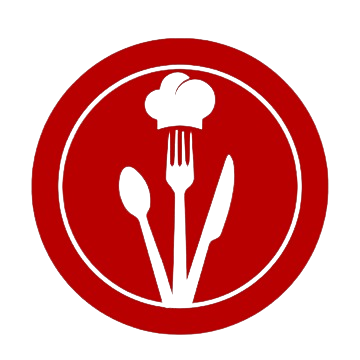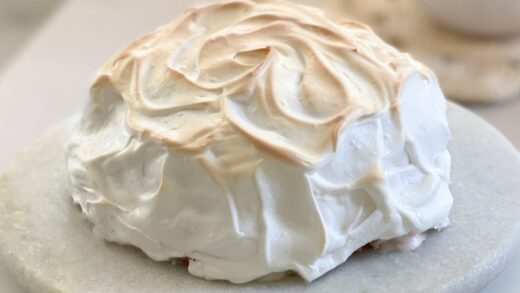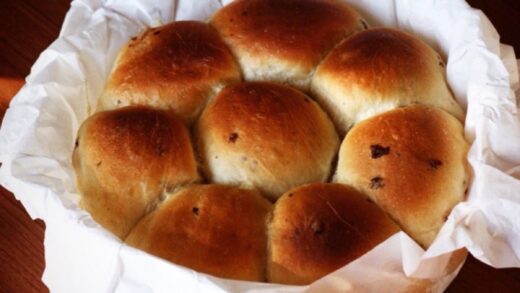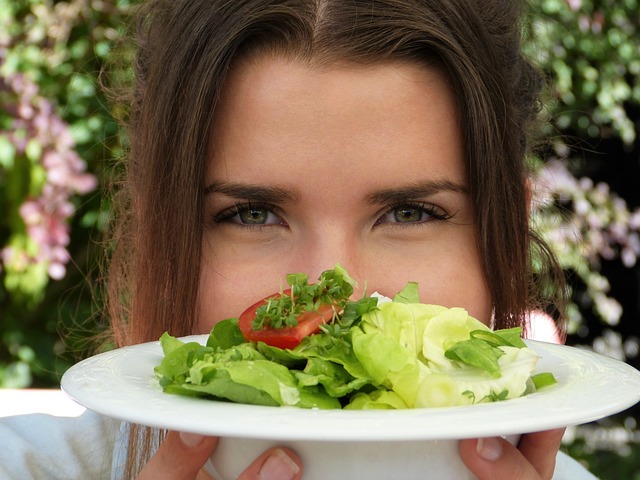Pumpkin Challah is a fall recipe that captures the sweet, earthy flavor of pumpkin with the soft, eggy texture of traditional challah. It’s the kind of bread that feels right at home on a Sukkot table, as part of a Thanksgiving feast, or simply as a cozy weekend treat.

Pumpkin Challah brings together two beloved holiday staples—challah and pumpkin—into one showstopping loaf. Whether you’re celebrating a Jewish holiday or hosting a Thanksgiving dinner, this bread is sure to be a centerpiece, both in appearance and flavor.
You can serve it with a drizzle of honey and melted butter for a sweet breakfast, or alongside savory dishes for dinner. This bread also makes the perfect companion for a warm cup of tea or cocoa on a chilly autumn night.
Ingredients
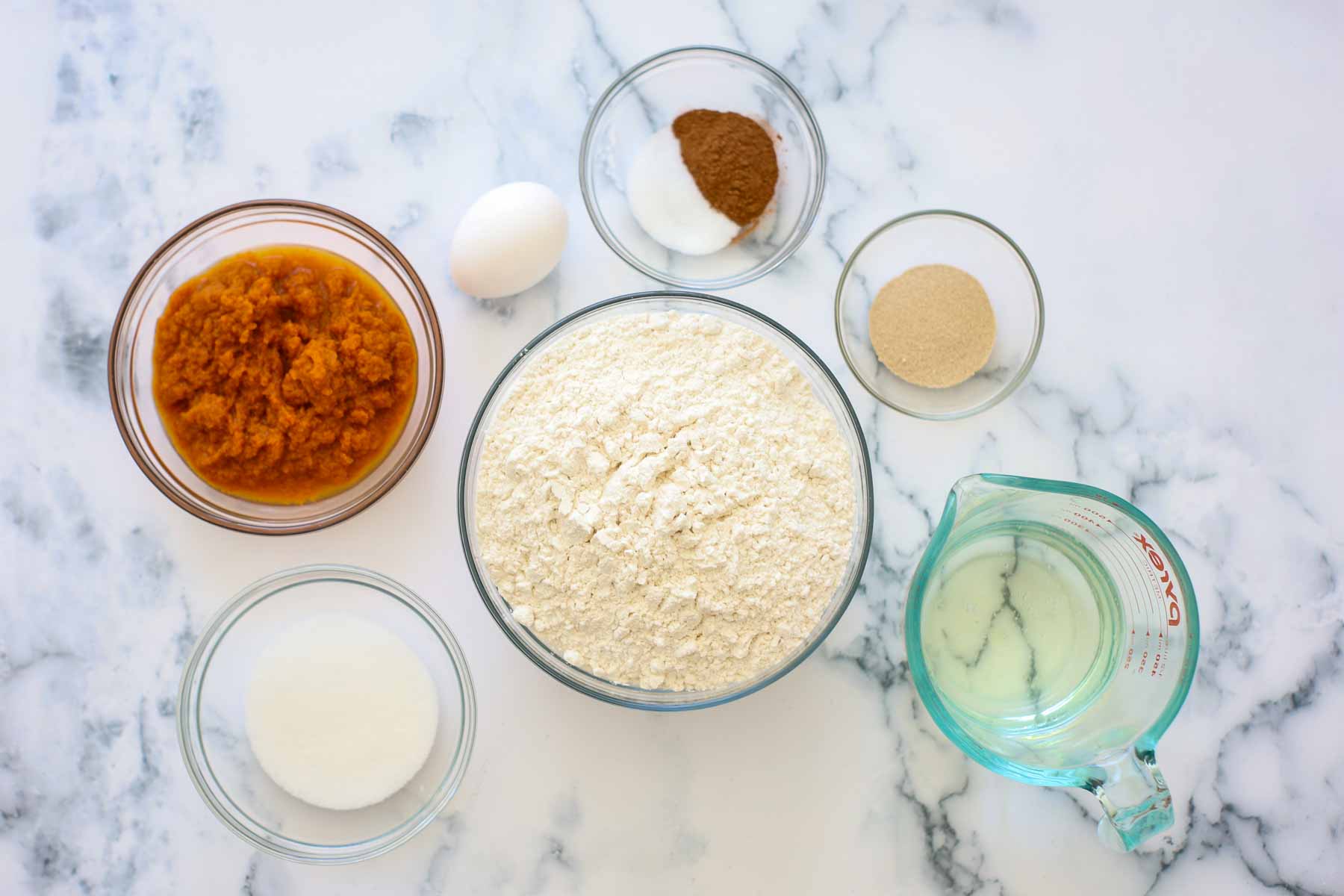
All-purpose flour: Use all-purpose flour for a soft, fluffier challah. If you’d like more structure, you could substitute with or add some bread flour.
Oil: Canola, vegetable, or sunflower oil work well. You can substitute with butter for a richer flavor and a slightly more tender crumb.
Water: Avoid using cold water. Room temperature water, whether filtered or tap, works best for this dough.
Yeast: I prefer using instant yeast for convenience. If you use active dry yeast, remember to bloom it in warm liquid before adding it to the dough.
Pumpkin purée: Canned pumpkin purée is ideal, especially if you’re new to bread baking. Avoid using canned pumpkin pie filling, as it contains added sweeteners and spices.
Pumpkin spice: This spice mix is optional. If you don’t have pumpkin spice available, I share my favorite pumpkin spice recipe in my pumpkin granola post.
How to Make It
Many people find the idea of making challah from scratch intimidating, especially with its intricate braid and fluffy texture. But here’s a secret: it’s not as hard as it looks.
Yes, making challah takes a bit of time as any yeast bread, but most of that time is hands-off, letting the dough rise and develop its flavors. The actual process of mixing and kneading is simple. Let’s go through it together!

Step 01. After combining the ingredients and mixing until combined, knead the dough. Knead it for about 4 minutes if using a stand mixer (8 to 10 if doing by hand), until it becomes smooth and slightly tacky.
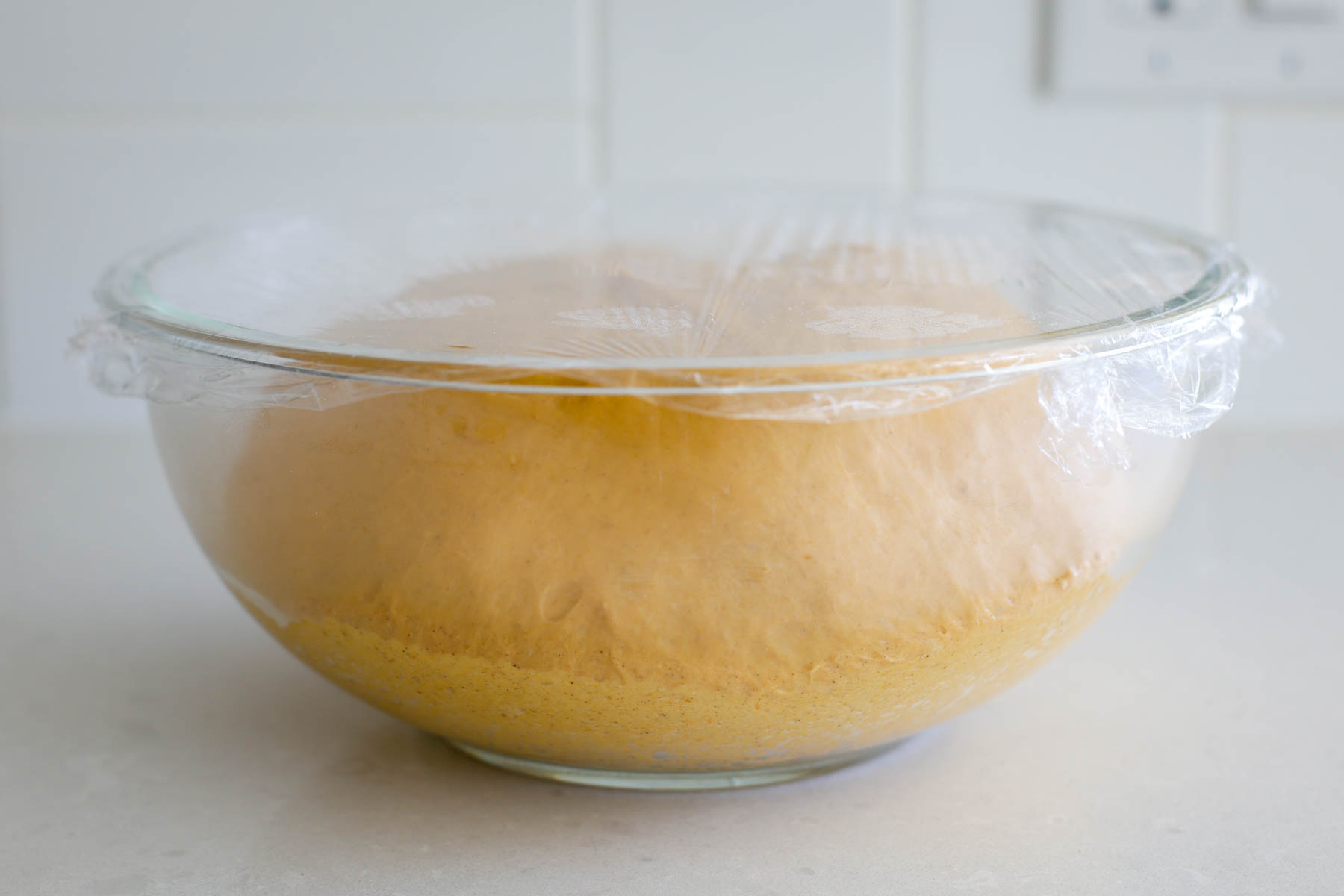
Step 02. Once the dough has finished kneading, let it rise on a warm spot, covered, until it has doubled in size.
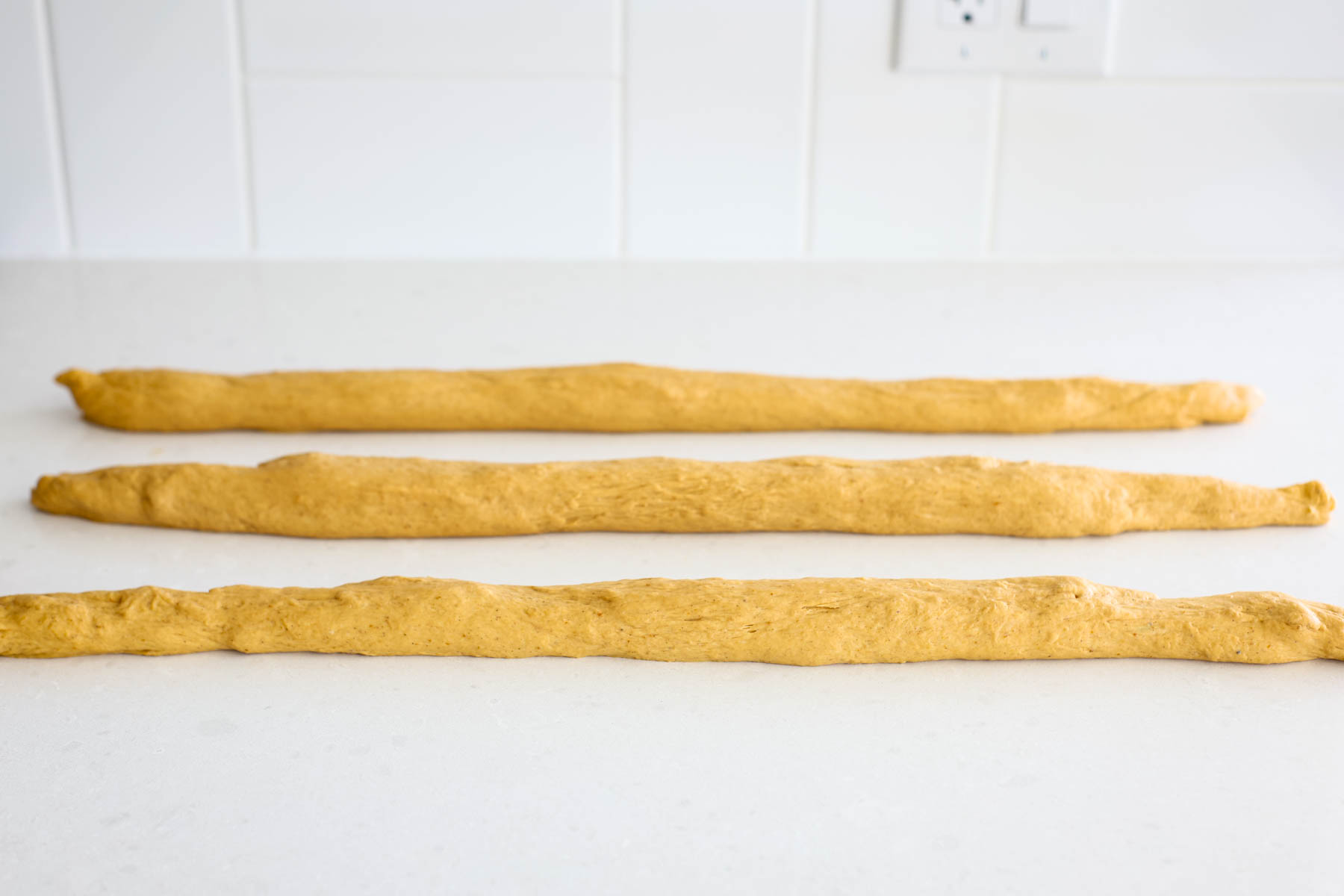
Step 03. Use both hands to roll each dough part back and forth on the work surface, turning it into a long rope with slightly tapered ends. Lightly flour each rope to prevent them from fusing together during baking.
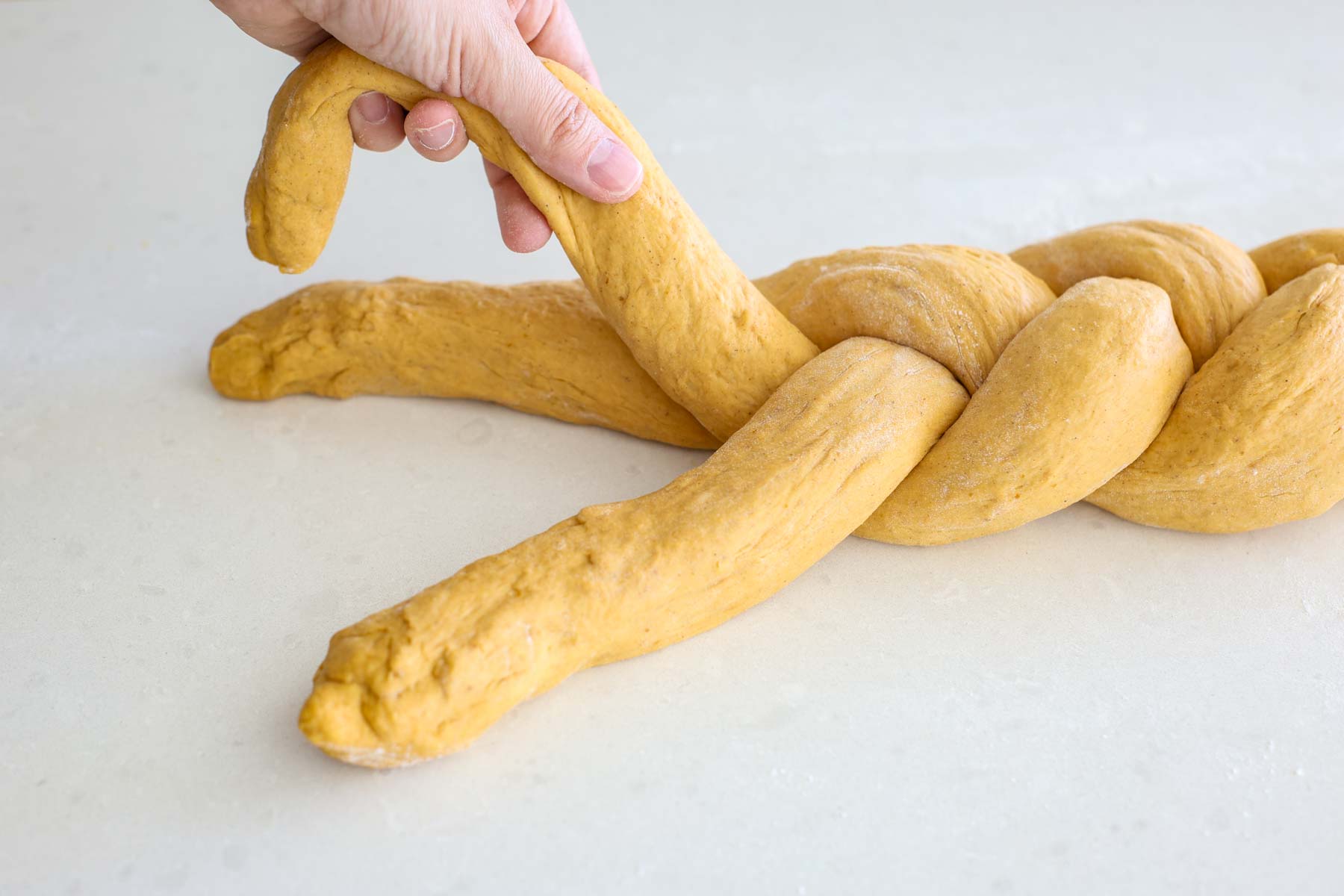
Step 04. Pinch the tops of the 3 dough ropes together. Braid the ropes by lifting each one up and over, creating a stacked, high braid. You want the braid to be taller in the center and tapered at the ends. Once you reach the bottom, press and seal the ends together with your palm.
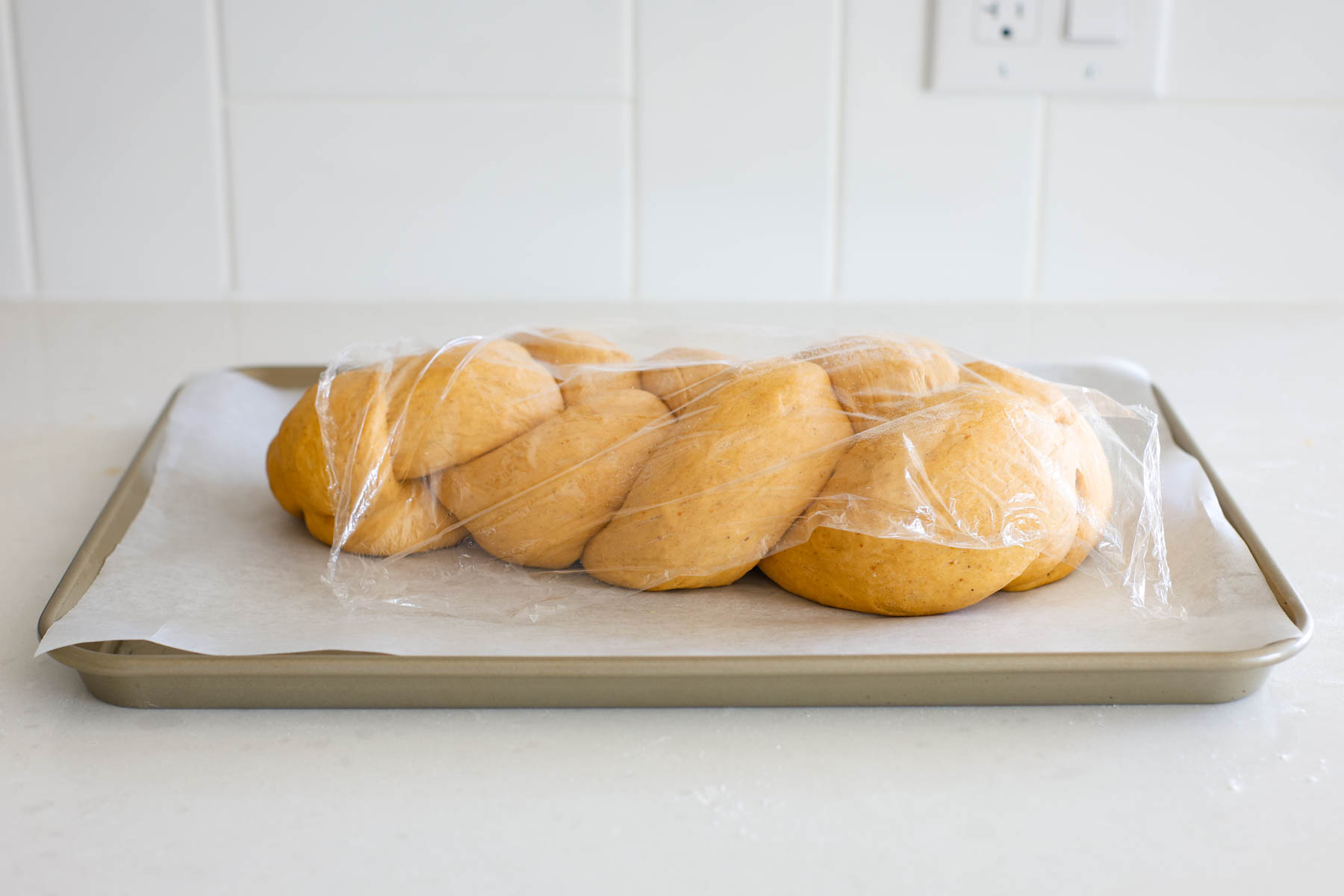
Step 05. Place the braided challah loaf onto parchment paper lined baking sheets. Cover the dough and set it aside in a warm spot for the second rise. Let the dough rise until it has doubled in size, about 40 minutes.
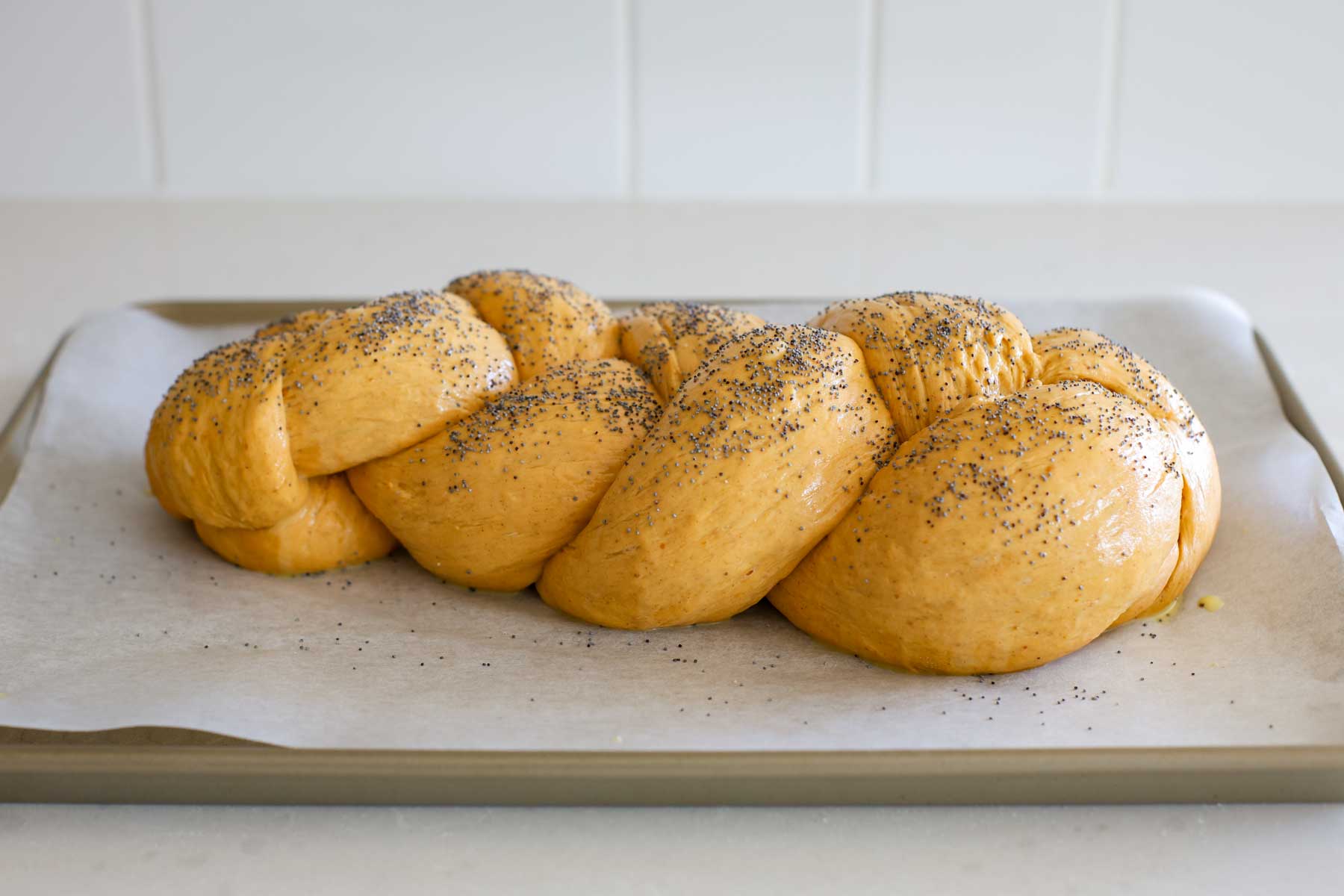
Step 06. Prepare an egg wash by whisking together the egg yolk and water. Gently brush a thin layer of egg wash over the entire surface of each loaf. Sprinkle the loaves with poppy or sesame seeds.
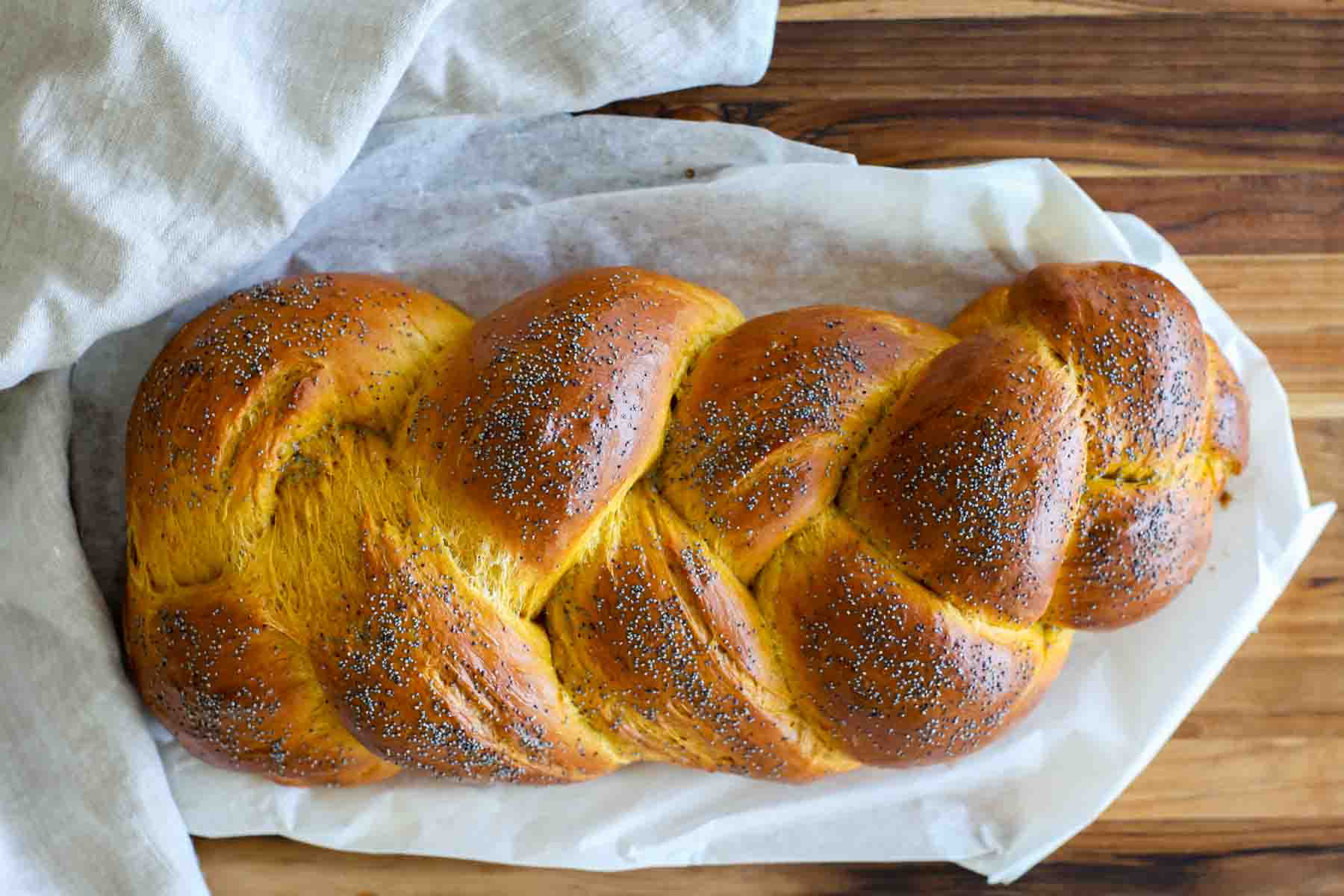
Step 07. Place the loaves in the preheated oven (375°F), middle rack, and bake until golden brown, about 30 minutes.
You can use this dough to make challah rolls! Check how to shape challah knots easily and get delicious pumpkin challah buns with this recipe.
Absolutely! It may take a bit longer, but it is doable. The key is to work the dough until it becomes smooth and firm, just as you would with a mixer.
If your dough feels too sticky after kneading, don’t worry! This can happen due to factors like humidity or the moisture content in the pumpkin purée. To fix it, gradually add up to ½ cup of flour, a little at a time, until the dough becomes smooth and manageable. Be careful not to add too much, as you still want the dough to remain soft and slightly tacky for the best texture. Start with ¼ cup of flour, adding more only of needed.
Instant yeast is ideal for challah as it doesn’t need to be activated. If you use active dry yeast, bloom it in some of the water with a dash of sugar first, letting it sit for 10-20 minutes until bubbly before continuing with the recipe.
Expert Tips
- Use canned pumpkin purée. Fresh pumpkin puree can be too watery and may affect the dough’s consistency.
- When shaping your loaf, braid the dough loosely to allow room for the dough to rise during baking. This gives the challah that perfect pillowy texture.
- One key to success is to measure your ingredients carefully. Using a digital scale for accuracy will help ensure consistent results. The dough itself should be soft, stretchy, and just a little sticky. Let it rise until it doubles in size, and don’t rush it.
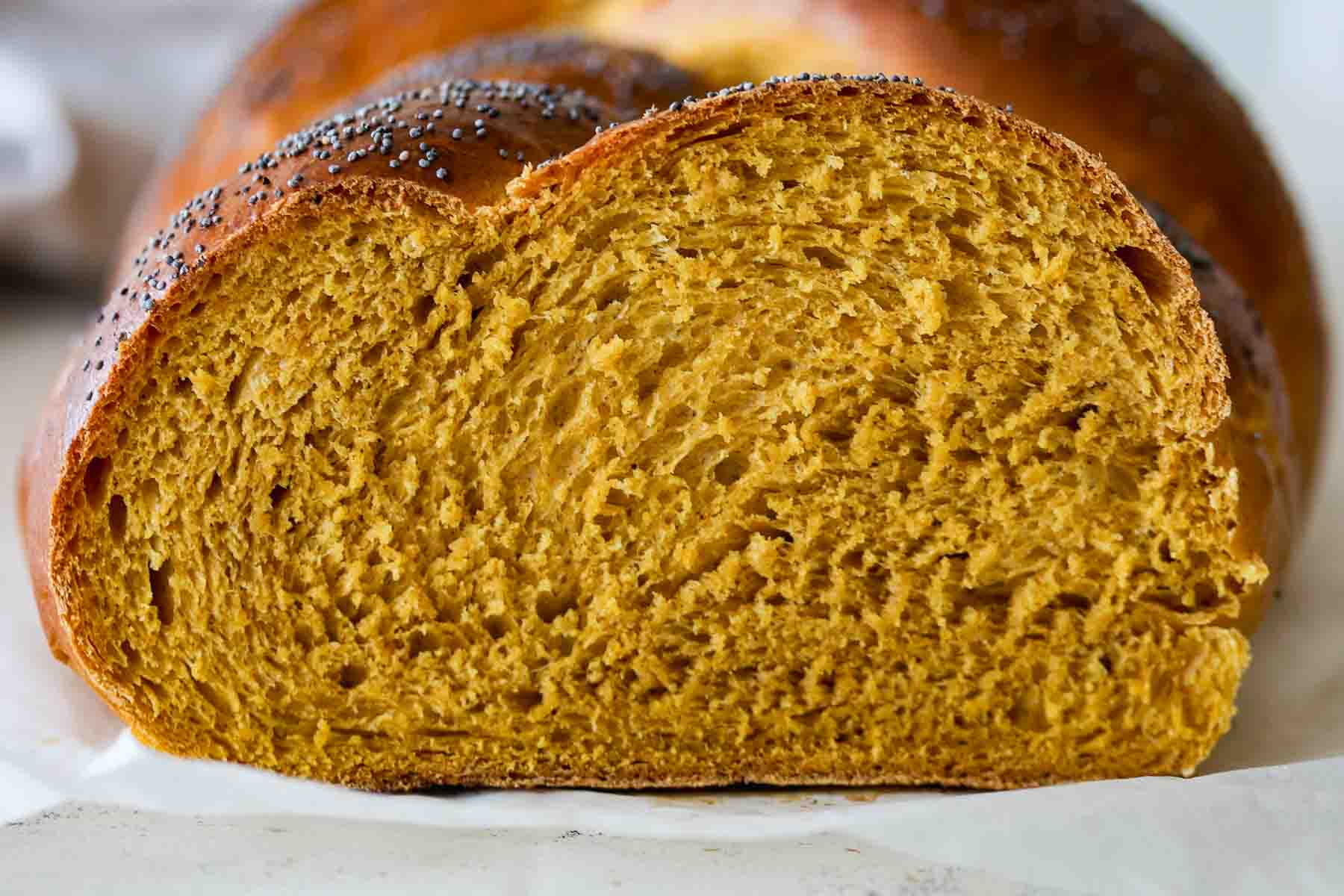
Storing and Freezing
Pumpkin challah is best enjoyed fresh. Allow it to cool completely before storing it in a bread keeper or airtight container or bag. It will stay fresh for up to 5 days at room temperature.
You can freeze this bread. Wrap it tightly in plastic wrap and place it in a freezer bag for up to 3 months. To serve, thaw it at room temperature or warm it in a 350°F oven for 10 minutes.
More Pumpkin Recipes
Have you tried this Pumpkin Challah Recipe? Please leave a 🌟 star rating in the recipe card below, I’d love to know how it went!
📖 Recipe
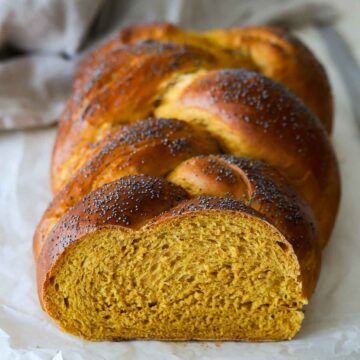
Pumpkin Challah
Pumpkin Challah is a fall recipe that captures the sweet, earthy flavor of pumpkin with the soft, eggy texture of traditional challah. It’s the kind of bread that feels right at home on a Sukkot table, as part of a Thanksgiving feast, or simply as a cozy weekend treat.
Prevent your screen from going dark
Ingredients
Instructions
-
In a large bowl, or the bowl of your stand mixer (if using one), combine all dough ingredients: pumpkin puree, water, instant yeast, all-purpose flour, egg, sugar, salt, oil and pumpkin spice if using. Mix until a shaggy dough is formed.
-
Using a dough hook or your hands, knead the dough. Do it for about 4 minutes if using a stand mixer, 8 to 10 if doing by hand. The dough should be smooth and slightly tacky. It won’t stick to the sides of the bowl but a bit to the bottom.
-
Once the dough has finished kneading, let it rise on a warm spot, covered, until it has doubled in size.
-
After the first rise, remove the dough from the bowl and place over a clean surface. Divide the dough into 3 equal parts.
-
Use both hands to roll each dough part back and forth on the work surface, turning it into a long rope with slightly tapered ends. When rolling, press lightly near the ends to flatten them a bit. Repeat this process with the remaining dough cylinders. Lightly flour each rope to prevent the strands from fusing together during baking.
-
To braid the challah, pinch the tops of the 3 dough ropes together. If you find it helpful, place a small weight on top to hold the ends in place. Braid the ropes by lifting each one up and over, creating a stacked, high braid. You want the braid to be taller in the center and tapered at the ends. Once you reach the bottom, press and seal the ends together with your palm.
-
Place the braided challah loaf onto parchment paper lined baking sheets. Cover the dough and set it aside in a warm spot for the second rise. Let the dough rise until it has doubled in size, about 40 minutes, depending on the warmth of the room.
-
As the dough rises, adjust your oven racks to the middle position. Preheat the oven to 375°F.
-
Before baking, test the dough’s readiness by pressing your finger lightly into it. If the depression fills in halfway, the dough is perfectly proofed. If it fills back in quickly and completely, it needs more time to rise.
-
Prepare an egg wash by whisking together the egg and water in a small bowl. Gently brush a thin layer of egg wash over the entire surface of each loaf. Sprinkle the loaves generously with poppy or sesame seeds.
-
Place the loaves in the oven and bake until golden brown, about 30 minutes, or until it reaches the internal temperature of 190°F. Let it cool over a cooling rack.
Notes
- Challahs are usually made with vegetable or sunflower oil so that a loaf can be served alongside meat (you don't serve meat and dairy together in kosher tradition). But you can also make challah with butter. It’s a personal preference, so you choose what you like.
- Use canned pumpkin purée for the best texture. Fresh pumpkin can be too watery and may affect the dough’s consistency.
- When shaping your loaf, braid the dough loosely to allow room for the dough to rise during baking. This gives the challah that perfect pillowy texture.
- If your dough feels too sticky after kneading, don’t worry! This can happen due to factors like humidity or the moisture content in the pumpkin purée. To fix it, gradually add up to ¼ cup of flour, a little at a time, until the dough becomes smooth and manageable. Be careful not to add too much, as you still want the dough to remain soft and slightly tacky for the best texture.
Nutrition
Serving: 1sliceCalories: 197kcalCarbohydrates: 35gProtein: 6gFat: 4gSaturated Fat: 1gPolyunsaturated Fat: 1gMonounsaturated Fat: 2gTrans Fat: 0.01gCholesterol: 23mgSodium: 190mgPotassium: 98mgFiber: 2gSugar: 4gVitamin A: 2416IUVitamin C: 1mgCalcium: 16mgIron: 2mg
#Pumpkin #Challah #Milk #Pop
